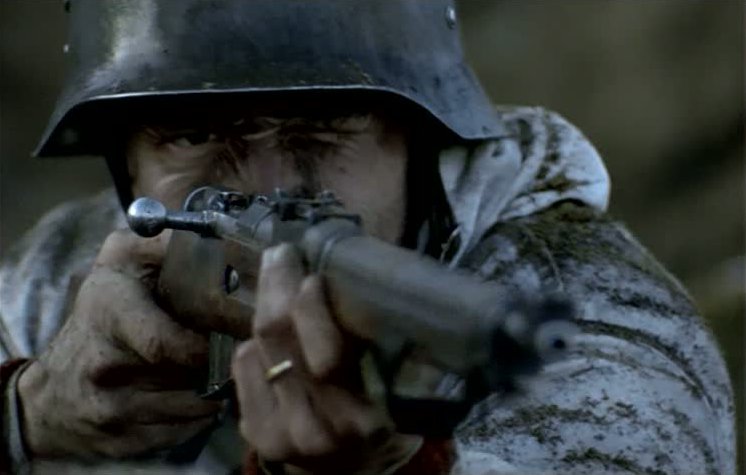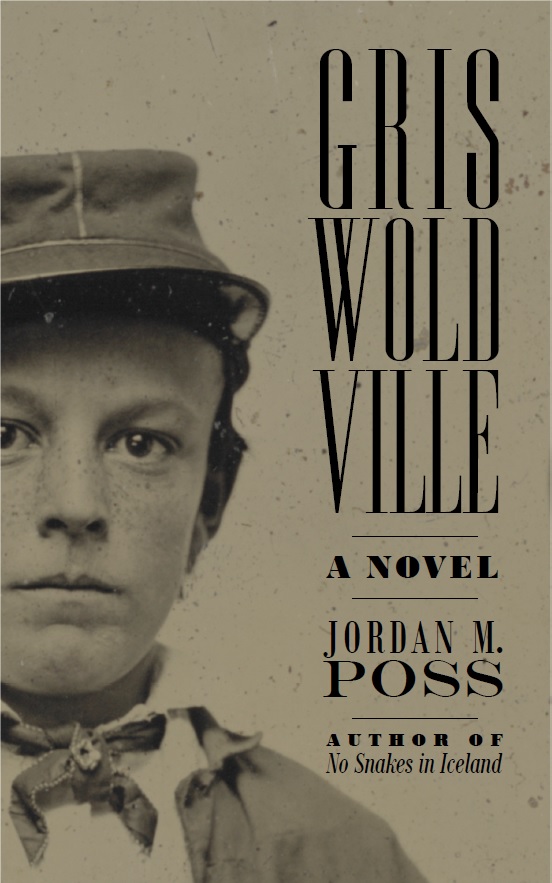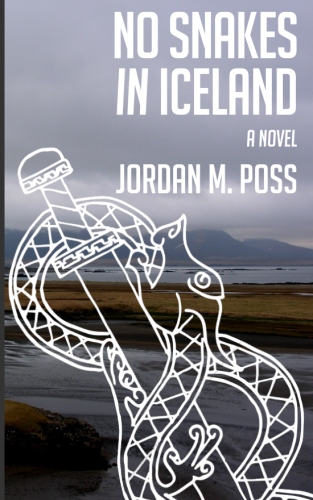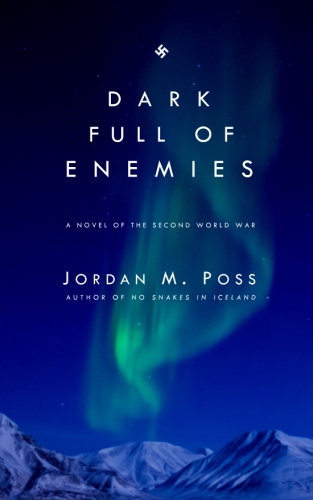Unknown Soldiers follows a company of Finnish machine gunners through the Continuation War, from the beginning in the summer of 1941 to ceasefire in September 1944. The Finns coordinated their invasion of Soviet Russia with the German invasion, Operation Barbarossa, making the Finns ostensible German allies though they were never fully incorporated into the Axis. The goal was to recapture land taken from Finland by the Russians during the Winter War and occupy other territory to be used for postwar bargaining following German victory.
None of this matters to the characters in Linna's novel. Not really. They know about most of this political background and occasionally discuss it, but their war is earthy, small-scale, and intensely personal. They are less concerned with Hitler's eventual success against Stalin than with how to handle the weight of a machine gun while marching, how to get enough to eat, how to make some extra cash while the war keeps them from home, how to keep out of the way of officers, and how to stay alive.
The novel begins and ends with the war. After a brief introduction to most of the major characters—there is no single "main" character—the machine gun company assembles and boards trucks for the front. They don't know where they're going or why at first, and a brief passage on God's destruction of a patch of forest through a wildfire is the last bit of omniscience we'll get until the very end. We experience the fog of war with the characters, seldom knowing any more than they do and taken by surprise just as often as they are.
The characters are wonderfully drawn, and have apparently become bywords for particular kinds of people in Finland. Linna ranges up and down the chain of command, giving us moments with everyone from the company commander to new privates who arrive at the front a few years in. Lieutenant Lammio, a potential martinet but otherwise harmless, becomes company commander after the respected previous commander is killed just a few days into the war; in his new position, his negative traits come to the fore. Ensign Kariluoto, another officer, is naive and detached and has the novel's only real love story, budding from his infatuation with Sirkka, a hometown girl. There's Hietanen, a bluff, good-humored jokester who is nevertheless painfully shy around women, and Vanhala, a giggler, both of whom sober up over the next three years, especially as they rise to positions of leadership and find themselves tested. Lehto is aloof, a gruff, tough fighter, and Määtä, a short, quiet man, never shirks from hauling his squad's machine gun, quietly earning the respect of every man in the company. Lahtinen is a communist sympathizer who, like most Marxists, annoys his friends by interjecting mindless revolutionary formulae into ordinary smalltalk. Honkajoki is an eccentric trying to build a perpetual motion machine and who carries a bow and arrows. Mäkilä, the company quartermaster, is obsessively stingy with the men's gear: "He kept the shelves in impeccable order," Linna tells us, "stocked with all the finest equipment, unmarred by any worn-out items—which he distributed to the company."
The novel is also, I should point out, wryly funny.
My two favorite characters were Rokka and Koskela. Antero "Antti" Rokka is an older man—in his early- to mid-thirties—a husband and father, a veteran of the Winter War, and a refugee from Kannas, part of the Finnish territory taken by the Russians. He has the most personal stake in the success of the invasion, and only when it becomes clear, in the last quarter of the book, that he'll never see his old farm again is his chipper, folksy demeanor shaken. He has no time for formalities and routinely offends superiors with a knowing "Lissen here." He is also the best soldier in the company, never shrinking from combat, and, in one famous episode, ambushing and wiping out a platoon of more than fifty Russian soldiers with just his submachine gun. (This incident, far from being a proto-Rambo bit of action, is based on an actual incident in which a soldier named Viljam Pylkäs gunned down over eighty Russians.) By the end of the novel, when he's one of the only major characters left, I really dreaded for his safety.
Koskela, on the other hand, is an officer who achieved his rank through merit, during the Winter War. He's strong, silent ("quiet Koski" is a nickname used a few times throughout), courageous, leads by example, loved by his men—all the qualities of a Greek hero without the arrogance or ostentation. As a leader, he also sets himself apart through the crucial ability to know what matters and what doesn't, an ability Lammio, who tries to court martial Rokka at one point, lacks. When leadership of the company finally devolves onto Koskela at the end of the book, as the Finns retreat from Russia and face encirclement, Koskela acts quickly and decisively and his men follow. It's a really stirring portrait of manhood and leadership.
Linna also has a lot to say about courage, but shows what courage really means in modern war. For every death-defying one-man charge on an enemy bunker by Koskela there are two or three small moments borne of split-second decisions by men forced into a corner: Lahtinen staying behind with a machine gun while his buddies evacuate wounded men, or Hietanen finding almost accidental courage in the face of a Russian tank attack:
It was as if his entire consciousness had been frozen. It refused to consider the significance of these angry blasts, as if shielding itself from the terror such considerations would induce. Hietanen darted quickly behind the upturned roots.
Just then he heard Rokka's voice yelling, "Now shoot like hell!"
Hietanen was panicked and trembling with anxiety. The urgency ringing in Rokka's cry struck his over-excited consciousness as a warning of some new, unknown danger. Then he realized that the call was intended for the others.
It occurred to him he did not know if the mine was functional or not. He didn't know anything about it except that it was supposed to explode under pressure. It was a little late for sapper training, however. The time was now or never.
A vision of the tank tracks rolling beneath their fenders flashed through his mind. Right there ... right there ... And then he threw. The weight of the mine made aiming next to impossible, and a kind of prayer-like wish flickered through Hietanen's consciousness as he hurled it. . . . Only then did the precariousness of his own position suddenly dawn on him. Would the tree base be enough to protect him from the force of the blast? He sank down behind it, opened his mouth and pressed his hands against his ears.
Two seconds later, it was as if the pressure of the whole world suddenly descended upon him. He didn't experience the explosion as a sound, but rather as a numbing, thudding blast—and then his consciousness went dim.
When it returned, he saw that the vehicle was still, titled slightly to one side. . . . He just lay there, looking back and forth at the tank, then at the men, who were yelling at him, "Yes, Hietanen! Woo-hoo! Bravo, Hietanen!" The praise was all wasted, however; Hietanen couldn't hear a thing.
All the danger, brutality, humor, courage, excitement, dread, horror, irony, and businesslike slogging mirror the war and Finland's role in it. It's excellent.






















